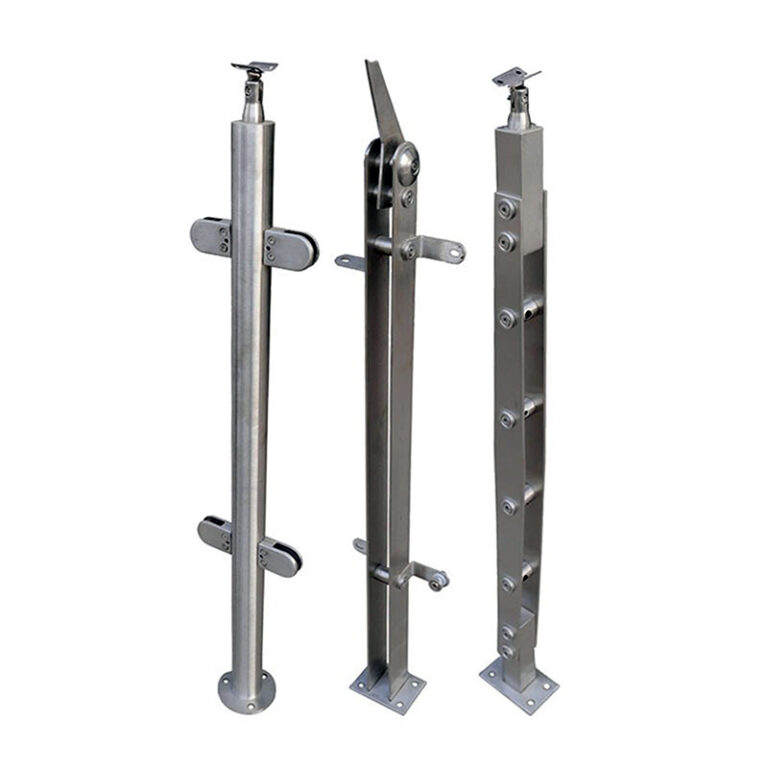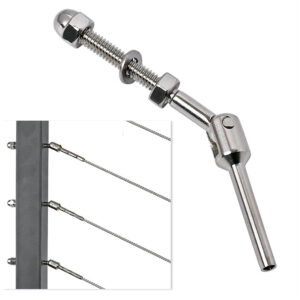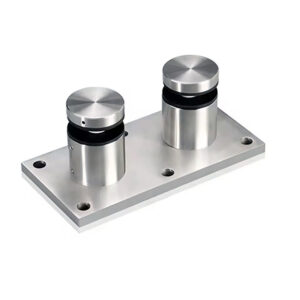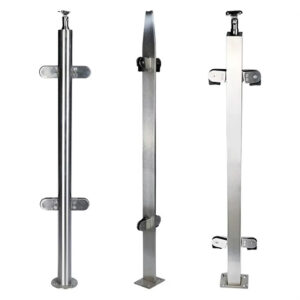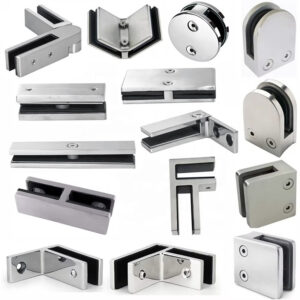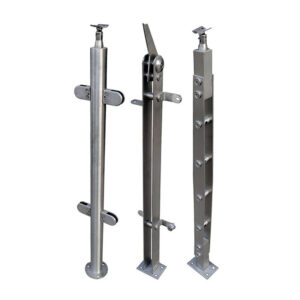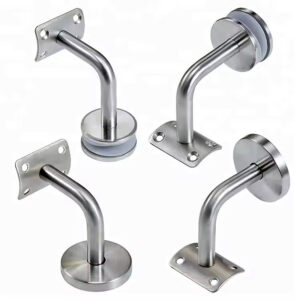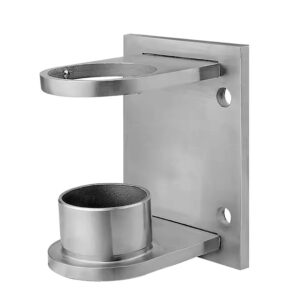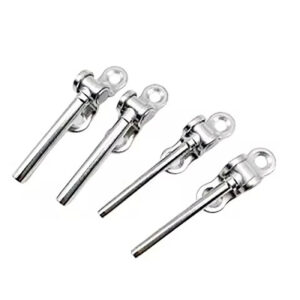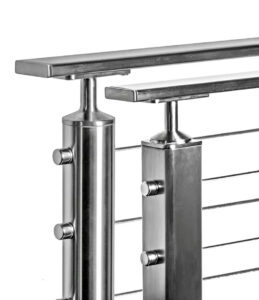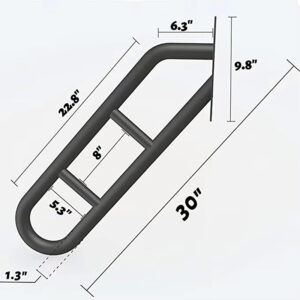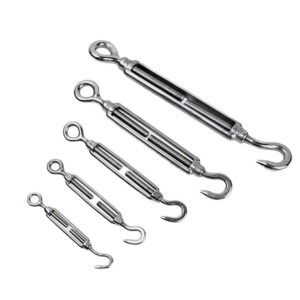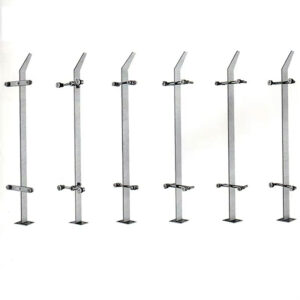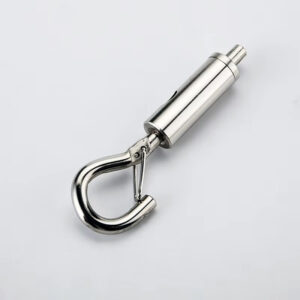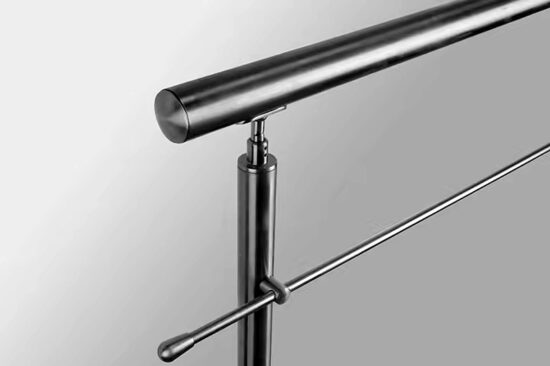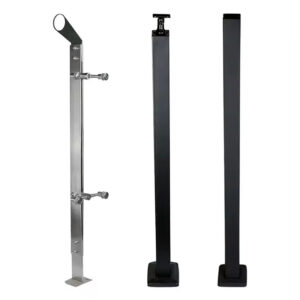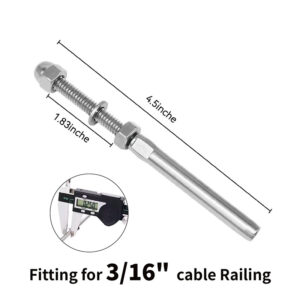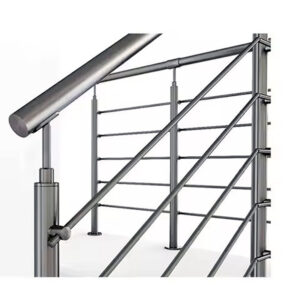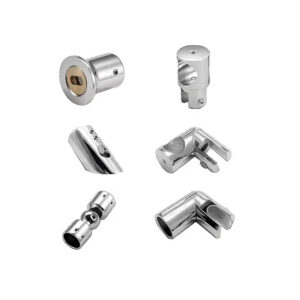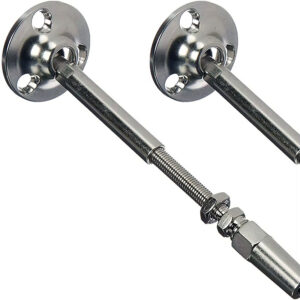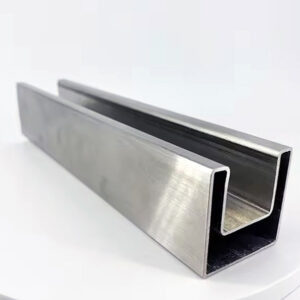Waterfront construction presents unique challenges—saltwater corrosion, thermal expansion, code compliance, and installation access issues that standard railing systems weren’t designed to handle. After 23 years of manufacturing marine-grade hardware, we’ve learned that pier dock railing systems need more than just stainless steel. They need engineered solutions that account for environmental stress, maintenance access limitations, and the reality of working over water. Esang Metal has developed comprehensive railing solutions specifically for these demanding applications.
Marine-Grade Railing Components That Actually Last
Engineered Pier Dock Railing Systems
Our pier dock railing systems use 316L marine grade stainless steel with enhanced corrosion resistance for saltwater environments. Post-to-rail connections feature sealed assemblies that prevent water infiltration. Adjustable base plates accommodate pier deck variations while maintaining structural integrity. The modular design allows for efficient shipping to remote waterfront locations and simplified field assembly when crane access is limited.
Surface treatments include electropolished finishes that resist marine growth adhesion and reduce maintenance frequency. Rail profiles incorporate drainage features to prevent water pooling. Connection hardware uses marine-grade fasteners with anti-seize compounds rated for 20+ year service life. System components integrate with standard pier construction methods while meeting Coast Guard and local marina regulations.
Specialized Dock Hardware Solutions
Pier dock fabrication 316L marine components include through-post cable systems, glass panel mounting hardware, and continuous rail assemblies. Cable railing tensioners feature sealed mechanisms that maintain optimal tension despite thermal cycling. Glass clamps use compression gaskets that remain flexible in temperature extremes while preventing stress concentrations.
Post mounting systems accommodate both new construction and retrofit applications. Base connections distribute loads across pier deck structures without requiring specialized anchoring. Wall-mounted options work with seawalls, bulkheads, and pier buildings. All hardware maintains structural ratings in marine environments with documented performance data.
▶ Get Marine Component Specs ◀
Critical Marine Environment Specifications
| Component Type | Material Grade | Corrosion Resistance | Service Life | Maintenance Interval |
|---|---|---|---|---|
| Structural Posts | 316L Stainless | ASTM B117 5000+ hours | 25+ years | Annual inspection |
| Rail Assemblies | 316L Stainless | Coastal Category 5 | 20+ years | Bi-annual cleaning |
| Cable Hardware | 316L with Seals | Marine Grade Class 1 | 15+ years | Semi-annual tension check |
| Glass Clamps | 316L + EPDM | Salt Spray Certified | 20+ years | Annual gasket inspection |
| Fasteners | Super Duplex | PRE Rating >40 | 25+ years | As-needed replacement |
| Installation Complexity | Standard Pier | T-Head Pier | Floating Dock | Seawall Application |
|---|---|---|---|---|
| Setup Time (per 100 LF) | 16-20 hours | 24-28 hours | 20-24 hours | 12-16 hours |
| Crane Requirements | Optional | Required | Barge-mounted | Shore-based |
| Access Challenges | Minimal | Moderate | High | Low |
| Weather Sensitivity | Low | Moderate | High | Low |
Proven Marine Applications
Commercial Marina Projects
ODM pier dock railing manufacturing capabilities have delivered solutions for 200+ marina installations. A recent 2,400-foot pier project in North Carolina required custom post spacing to match existing piling layouts. Our engineering team modified standard rail assemblies to accommodate 12-foot spans while maintaining code compliance. Installation time averaged 18 hours per 100 linear feet despite challenging access conditions.
Commercial pier dock systems for a California harbor project integrated LED lighting conduits within rail profiles. The modular approach allowed pre-assembly of 20-foot sections with electrical connections, reducing on-site installation time by 35%. Marine grade pier railings maintained structural integrity through two major storm seasons with minimal maintenance requirements.
“Modular pier railing systems reduced our installation time by 40% compared to field-welded assemblies.” —International Marina Development Association
Municipal Waterfront Infrastructure
A major East Coast city specified our commercial pier dock systems for a 3-mile boardwalk reconstruction project. Custom dock railing components accommodated varying pier widths while maintaining consistent appearance standards. The 316L stainless construction eliminated painting requirements, reducing long-term maintenance costs by an estimated $180,000 over 20 years.
Public pier installations require enhanced safety features and ADA compliance. Our railing height options include 42-inch and 48-inch configurations with intermediate rail spacing optimized for safety codes. Glass infill systems provide wind protection while maintaining visibility. Cable rail alternatives offer modern aesthetics with simplified maintenance in high-traffic areas.
“Standardized components simplified procurement while meeting diverse site conditions across 12 pier locations.” —American Public Works Association
Private Waterfront Development
Residential pier projects benefit from factory-precision manufacturing that eliminates field welding. A luxury waterfront development in Florida used our glass railing systems for 24 private piers. Pre-engineered post locations matched architectural plans exactly, preventing costly field modifications. Electropolished surfaces maintained appearance standards despite salt spray exposure.
Custom dock railing components included integrated planters, bench attachments, and utility brackets. The modular design accommodated future modifications without structural compromises. Installation proceeded during optimal weather windows with minimal disruption to adjacent properties.
▶ Discuss Your Waterfront Project ◀
Installation Excellence in Marine Environments
Modular Assembly Advantages
Pier dock railing systems ship in pre-assembled sections sized for standard transportation. Components nest efficiently to minimize freight costs to remote waterfront locations. Field connections use mechanical fasteners instead of welding, eliminating hot work permits and reducing weather delays. Standard tools complete most installations without specialized equipment.
Quality control in our manufacturing facility ensures consistent fit-up that prevents field problems. Tolerance specifications account for typical pier deck variations. Pre-drilling and hardware packaging speed installation while preventing component mix-ups. Each shipment includes detailed assembly drawings specific to project requirements.
Marine Construction Realities
Tide schedules, weather windows, and barge access limitations require flexible installation approaches. Our technical support team coordinates delivery timing with contractor schedules. Component staging areas minimize on-pier inventory requirements. Installation sequences accommodate crane operations and utility rough-in work.
Marine grade pier railings require specialized knowledge of saltwater environmental effects. Our 23 years of waterfront experience guide material selection, drainage design, and connection details. Field support includes installation oversight and problem-solving assistance. Post-installation inspections verify performance specifications and identify any adjustment needs.
“Pre-engineered systems eliminated weather delays and reduced crane time by 60%.” —Marine Construction Industry Council
▶ Talk to Our Marine Engineers ◀
Frequently Asked Questions
Q: How do I select the right stainless grade for different marine exposures?
A: 316L stainless handles most pier dock applications, including saltwater splash zones. Super duplex grades work for severe exposure like surf zones or industrial waterfronts. Our material selection guide considers location, maintenance access, and service life requirements. Geographic factors like water temperature and pollution levels also influence material recommendations.
Q: What’s the typical installation timeline for commercial pier dock systems?
A: Standard installations average 18-22 hours per 100 linear feet with good access. Complex geometries or retrofit conditions may extend this to 28-32 hours. Weather delays average 2-3 days per week during optimal construction seasons. Our project planning includes buffer time for marine environment variables.
Q: How do modular systems handle custom pier layouts and obstacles?
A: ODM pier dock railing manufacturing capabilities accommodate non-standard spacing, angles, and elevation changes. Custom dock railing components integrate with standard assemblies to minimize engineering costs. Field adjustment hardware handles minor variations without compromising structural performance.
Q: What maintenance is required for marine grade pier railings?
A: Annual fresh water rinse removes salt deposits and marine growth. Hardware inspection focuses on connection tightness and gasket condition. Electropolished surfaces may require periodic cleaning for appearance. Cable systems need tension checks semi-annually. Most maintenance requires basic tools and minimal waterfront access.
Q: How do these systems compare to aluminum or painted steel alternatives?
A: Stainless steel eliminates coating maintenance that typically costs $8-12 per linear foot every 5-7 years. Initial cost premiums recover through reduced maintenance and 2-3x service life. Aluminum systems offer lower weight but limited strength for code compliance. Painted steel requires ongoing maintenance access that pier environments often don’t provide.
Q: What technical support is available for complex waterfront projects?
A: Our engineering team provides design assistance, connection details, and installation guidance. Site visits help resolve access challenges and coordinate with other trades. Technical documentation includes marine-specific installation procedures and maintenance protocols. Post-installation support covers performance optimization and modification requirements.
System Integration and Performance Comparison
| Railing System Type | Initial Cost | 20-Year Maintenance | Total Cost | Appearance Retention | Code Compliance |
|---|---|---|---|---|---|
| 316L Stainless Systems | Baseline | $2,400/100LF | Baseline | Excellent | Full |
| Painted Steel Systems | -25% | $8,600/100LF | +15% | Poor | Full |
| Aluminum Systems | -15% | $3,200/100LF | +8% | Good | Limited |
| Vinyl Alternatives | -40% | $4,800/100LF | +12% | Fair | Varies |
Marine environments demand systems engineered for long-term performance rather than lowest initial cost. Our 23 years of waterfront manufacturing experience demonstrates that properly specified stainless systems deliver superior value through extended service life and reduced maintenance requirements. Commercial pier dock systems justify premium materials through operational cost savings and enhanced safety performance.
Quality marine grade pier railings require manufacturing precision that ensures reliable field assembly. Our ODM capabilities customize standard components for unique applications while maintaining proven performance characteristics. Technical support throughout project lifecycle helps contractors achieve optimal installation efficiency and long-term client satisfaction.
